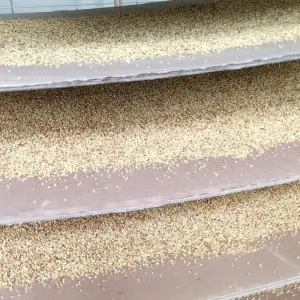Sep . 22, 2024 23:01 Back to list
the role of pear pollination product
The Role of Pear Pollination in Fruit Production
Pear trees, belonging to the genus Pyrus, are celebrated for their sweet and juicy fruits that are enjoyed worldwide. However, one essential aspect of pear cultivation that is often overlooked is the process of pollination. Pear pollination is a critical step in the lifecycle of pear trees, as it directly influences fruit yield, quality, and overall orchard health. Understanding the role of pollination in pear cultivation can help growers improve their practices, ensure better harvests, and increase the quality of their fruit.
The Role of Pear Pollination in Fruit Production
Insects, particularly bees, play a vital role in the pollination process of pear trees. Honeybees are among the most efficient pollinators, visiting flowers in search of nectar and inadvertently transferring pollen between trees. The seasonality of bees typically coincides with the blooming of pear flowers in spring, making them indispensable allies for orchardists. To maximize pollination, it is a common practice for growers to establish beehives near their orchards. This not only ensures sufficient pollination but also enhances biodiversity in the area, leading to healthier ecosystems.
the role of pear pollination product

The choice of pear varieties is also important for successful pollination. Growers need to select compatible varieties that bloom simultaneously to facilitate effective cross-pollination. Certain combinations of pear species can enhance fruit set and improve overall fruit quality. Examples of compatible pairs include ‘Bartlett’ and ‘Bosc’, which, when planted together, can significantly boost pollination efficiency.
Weather conditions can significantly influence the pollination process. Ideal temperatures and low wind conditions during the bloom period are crucial for encouraging insect activity and effective pollen transfer. Adverse weather, such as excessive rain or cold temperatures, can deter bees from visiting flowers, resulting in poor pollination and reduced fruit set. Thus, effective orchard management involves monitoring environmental factors and adjusting practices to protect trees during vulnerable blooming periods.
The benefits of good pollination extend beyond just quantity; it also affects the quality of the fruit produced. Pears that undergo successful cross-pollination generally develop larger, more uniform fruits with better flavor. In contrast, poor pollination leads to smaller, misshapen, and less flavorful pears, impacting the marketability and consumer satisfaction.
In conclusion, the role of pear pollination is fundamental to producing high-quality fruit and ensuring sustainable orchard practices. By understanding the intricacies of pollination, including the importance of bee activity and the selection of compatible pear varieties, growers can enhance their cultivation efforts. As the challenges of climate change and habitat loss threaten pollinators, it becomes increasingly essential for orchardists to adopt practices that support these vital contributors to pear production. Investing in sound pollination strategies not only safeguards fruit production but also fosters a holistic approach to agricultural sustainability.
-
Pollen Peach Tree for Pure Pollination and High-Quality Peach Pollen
NewsJul.30,2025
-
Premium Cherry Pollen for Pure Pollination & Different Types
NewsJul.30,2025
-
Artificial Pollination Solutions for Various Plant Pollen Types
NewsJul.29,2025
-
Artificial Pollination Solutions for All Plant Pollen Types
NewsJul.29,2025
-
Premium Plant Pollen for Pure Pollination & Pollen Block Solutions
NewsJul.29,2025
-
Artificial Pollination Solutions for Efficient Crop Yields
NewsJul.28,2025